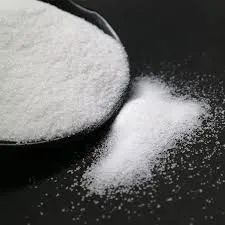The Role of Additives in Bioplastics
In recent years, the growing awareness of environmental issues has propelled the development and adoption of bioplastics as a sustainable alternative to traditional petroleum-based plastics. Bioplastics, derived from renewable biomass sources such as plant materials, fungi, and microorganisms, offer numerous advantages, including biodegradability and lower carbon footprints. However, to enhance their performance and expand their applications, various additives are increasingly employed in bioplastics. This article delves into the significance of bioplastic additives, their types, and their effects on the material properties and sustainability of bioplastics.
The Importance of Additives in Bioplastics
Additives play a crucial role in optimizing the physical, chemical, and thermal properties of bioplastics. Just like their petroleum-based counterparts, bioplastics require additives to improve their performance in various applications, ranging from packaging to consumer goods. The primary reasons for incorporating additives include enhancing mechanical strength, increasing flexibility, imparting UV stability, and improving processing characteristics.
1. Enhancing Mechanical Properties One of the main challenges with bioplastics is their inherent brittleness compared to traditional plastics. Additives such as plasticizers are used to reduce the rigidity of bioplastics. For instance, compounds like glycerol and sorbitol can be added to polylactic acid (PLA) to improve its flexibility and impact resistance. This enhancement is vital for applications where durability and strength are required, such as in agricultural films and molded products.
2. Improving Thermal Stability The thermal stability of bioplastics is critical for their processing and end-use applications. Additives such as stabilizers and flame retardants can help bioplastics withstand higher temperatures during processing and subsequently in service. Moreover, antioxidant additives are often employed to prevent oxidative degradation during processing, which can diminish the material's mechanical properties.
3. Enhancing Barrier Properties Bioplastics are often used for food packaging due to their renewable nature. However, their barrier properties can be inferior to those of conventional plastics. Additives like nanoclays or biopolymer blends can be incorporated to improve moisture and oxygen barrier properties, thereby enhancing shelf life and protecting food quality.
4. Color and Aesthetic Features Colorants and fillers are also crucial in making bioplastics marketable. These additives not only improve the visual appeal of bioplastic products but also can contribute to functionality, such as UV protection. Natural pigments derived from plants can be used for coloring, ensuring that the product remains environmentally friendly.
bioplastic additives

Types of Additives Used in Bioplastics
Bioplastic additives can be categorized into several groups based on their functions
- Plasticizers Enhance flexibility and reduce brittleness. - Stabilizers Improve thermal and oxidative stability. - Compatibilizers Assist in blending different biopolymer phases, improving performance. - Fillers Enhance specific properties like strength and reduce costs. - Colorants Provide aesthetic variations and desired coloration. - Biocides Prevent microbial growth in certain applications.
Sustainability Considerations
While additives enhance the performance of bioplastics, it is essential to consider their environmental impact. The goal of using bioplastics is to create a more sustainable alternative to conventional plastics. Therefore, it is important that the additives used are also biodegradable or derived from renewable sources. The use of natural additives (such as those derived from plants) can further enhance the ecological credentials of bioplastics.
Conclusion
Additives play a vital role in improving the functionality and applicability of bioplastics, making them more competitive with traditional plastics. By carefully choosing and formulating these additives, manufacturers can optimize bioplastic performance while adhering to sustainability goals. As the demand for environmentally friendly products continues to rise, the development of bioplastics with innovative and effective additives will be pivotal in shaping a more sustainable future in material science. In this way, bioplastics can significantly contribute to reducing plastic pollution and fostering a circular economy.

